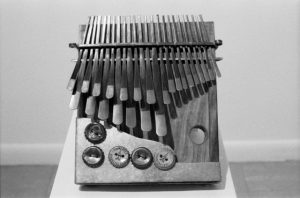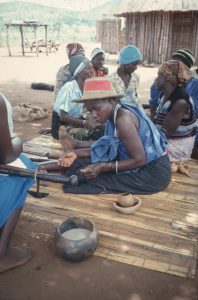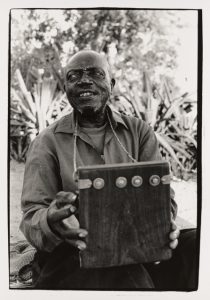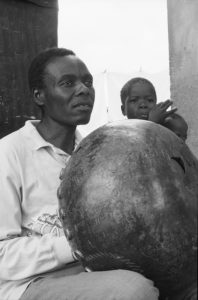Sekuru Chigamba’s primary instrument is Zimbabwe’s iconic mbira dzavadzimu, or “mbira of the ancestral spirits.” One of many types of mbira played throughout Southern Africa, the mbira dzavadzimu features between 22 and 28 keys mounted on a wooden soundboard, or gwariva. The mbira’s unique timbre is produced by shells, bottletops, or wire beads affixed to the instrument’s soundboard, producing a gentle buzzing sound. During performance, the instrument is often placed inside a calabash resonator, or deze, which amplifies its sound.
The repertory of the mbira dzavadzimu extends to well over a hundred songs. While some are specific to particular regions, families, or individuals, others are widely shared, immediately enabling musicians from different areas to play together. Mbira songs generally feature two interlocking parts, known as kushaura and kutsinhira, which are played simultaneously by two or more musicians. The interplay between these parts produces the complex polyphonic and polyrhythmic musical relationships characteristic of mbira music. Mbira songs typically emphasize triplet groupings, and the metric organization of many songs aligns with time signatures such as 6/8, 9/8, 12/8, and 16/8. Within a typical mbira ensemble, mbira performers are joined by at least one musician playing the hosho shakers, which are responsible for maintaining a steady triplet pulse.




